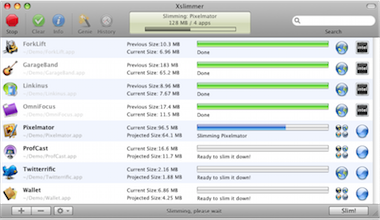


With the System Profiler open, go to the "Software" section and click "Applications." The tool will list all applications on the system (both from the Applications folder and elsewhere) along with various attributes about them including version, bitness, date last modified, and the kind (architecture). While this will identify a single application, it may be a bit cumbersome to do this for all of your applications, therefore there is another approach that may be more convenient, which is to use the System Profiler utility. The architecture will be shown in parentheses next to the word "Application." PowerPC applications can be found using the System Profiler utility One way to find if an application is a PowerPC application is to get information on it in the Finder, and check in the "General" section to see what kind it is.
Xslimmer alternative code#
In addition, some people might wish to get rid of the unused PowerPC code in Universal Binary applications. This is not a problem for most users, but since Apple is finally doing away with all PowerPC support in OS X 10.7 Lion, people who may still be using older older PowerPC code will find no option to run it. While it had potential, both it and the corporate politics behind it ultimately became a hinderance for Apple when competing with the vast and growing x86 and developing 圆4 architectures from Intel and AMD.Īpple made the transition to the x86 and 圆4 architectures very smooth with the use of Rosetta and Universal Binary applications, but this effort also resulted in a lot of remaining PowerPC code that is either still being used or is being packaged with Intel code in Universal Binary applications. Starting in the early nineties, the PowerPC chip became the primary CPU architecture used in Macs for the next decade and a half.


 0 kommentar(er)
0 kommentar(er)
